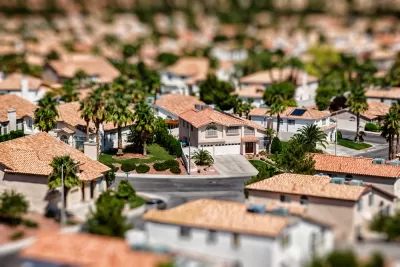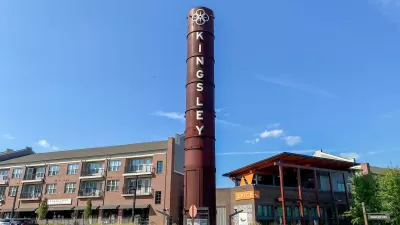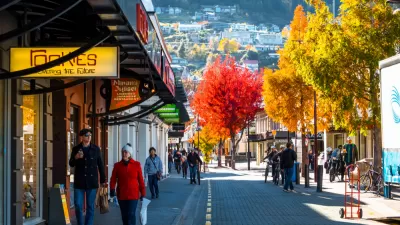Whether or not the suburban shift accelerated by the pandemic continues, policymakers can implement climate resilience strategies and guide sustainable growth in both cities and exurbs.

As Joseph Kane, Mona Tong, and Jenny Schuetz write, historically, a few key factors dictate where people choose to live: “proximity to where they work, preferred amenities like school quality or climate, and connections to social networks of family and friends.”
In the last two years, “According to prevailing media narratives, the pandemic has ‘supercharged’ suburbanization rates and even hastened the death of U.S. cities.” In fact, the authors argue, “this largely continues pre-pandemic trends. Between July 1, 2020 and July 1, 2021, many core urban counties (those home to the largest city within a metro area) continued to experience greater population losses than their neighboring suburban counties.”
Regional leaders, the authors argue, should avoid kneejerk reactions and “take a step back and recognize the uncertainty and complexity surrounding them—including the need to better analyze and assess their region’s evolving concerns.”
Whether the reaction to the pandemic is a short-term blip or longer-term pattern, it has not reduced our collective need for greater resilience—supporting our ability to live in safe, affordable, and climate-friendly communities. That means having smaller, more affordable housing, which allows workers at all income levels to live close to jobs and amenities.
The authors conclude that “In light of these unknowns, post-pandemic planning should focus on baking in more flexibility and best practices into our land use plans to prepare us for both potential future spikes in housing demand and the general long-term trend of increasing suburban and exurban population growth.”
FULL STORY: Pandemic-fueled suburban growth doesn’t mean we should abandon climate resiliency

Trump Administration Could Effectively End Housing Voucher Program
Federal officials are eyeing major cuts to the Section 8 program that helps millions of low-income households pay rent.

Planetizen Federal Action Tracker
A weekly monitor of how Trump’s orders and actions are impacting planners and planning in America.

Ken Jennings Launches Transit Web Series
The Jeopardy champ wants you to ride public transit.

Crime Continues to Drop on Philly, San Francisco Transit Systems
SEPTA and BART both saw significant declines in violent crime in the first quarter of 2025.

How South LA Green Spaces Power Community Health and Hope
Green spaces like South L.A. Wetlands Park are helping South Los Angeles residents promote healthy lifestyles, build community, and advocate for improvements that reflect local needs in historically underserved neighborhoods.

Sacramento Plans ‘Quick-Build’ Road Safety Projects
The city wants to accelerate small-scale safety improvements that use low-cost equipment to make an impact at dangerous intersections.
Urban Design for Planners 1: Software Tools
This six-course series explores essential urban design concepts using open source software and equips planners with the tools they need to participate fully in the urban design process.
Planning for Universal Design
Learn the tools for implementing Universal Design in planning regulations.
Heyer Gruel & Associates PA
Ada County Highway District
Institute for Housing and Urban Development Studies (IHS)
City of Grandview
Harvard GSD Executive Education
Toledo-Lucas County Plan Commissions
Salt Lake City
NYU Wagner Graduate School of Public Service





























